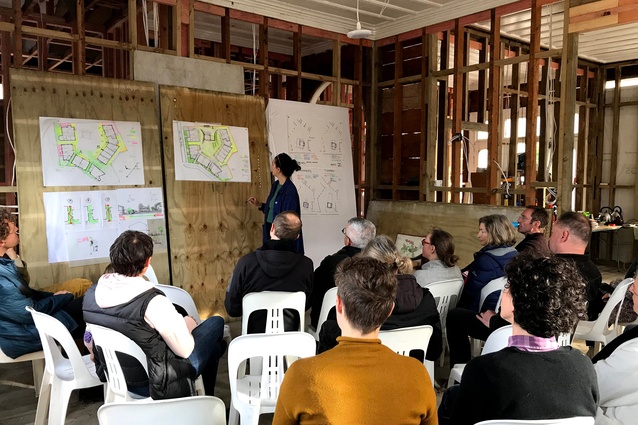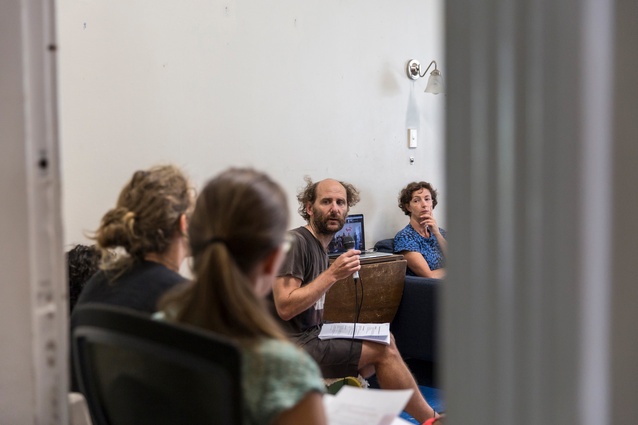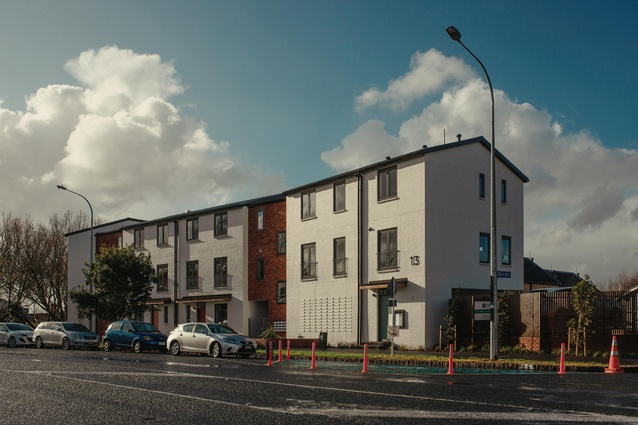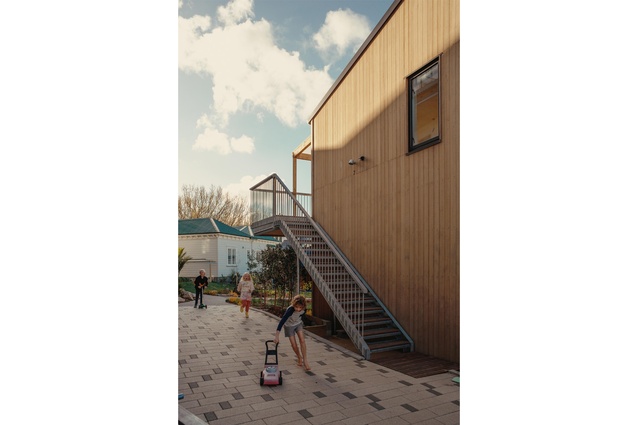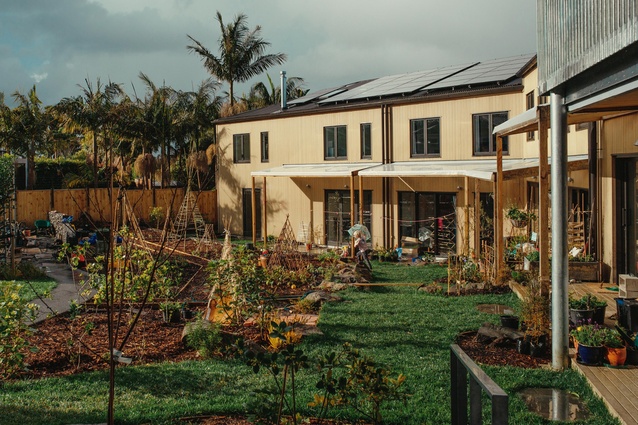Deconstructing the Cohaus journey: Key findings
Community-led alternative development models offer solutions to some of the biggest problems that Aotearoa’s citizens are facing today, including limited diversity of housing choices, affordability and increased social isolation.
In Aotearoa New Zealand, there is a growing appetite for collective/community-led housing. That appetite is strong, yet there are nominal guidelines to support groups and communities as they endeavour to investigate alternative housing options and models. Knowledge-sharing is an important tool that can help the community-led sector to grow and foster more equitable property development in New Zealand. In the context of the current housing climate and the increasing densification of cities nationally, sharing and promoting the efforts, experiences and approaches of an urban co-housing community from their first meetings until they’re settled into their new homes presents a unique opportunity to enable greater community accessibility to alternative living models.

Community-led alternative development models offer solutions to some of the biggest problems that Aotearoa’s citizens are facing today, including limited diversity of housing choices, affordability and increased social isolation. However, people wanting to do things differently face many financial, legal, and consenting hurdles because the traditional development model favours profit-driven development, predictability and standardisation over uniqueness. Community-led developments are more difficult to achieve because of their social complexity but, for that very reason, once developed, they make an outsized contribution to the local community and provide inspiration and built experience to other community-focused housing projects wanting to build.
One of our missions at The Urban Advisory is to promote the benefits and opportunities that exist in alternative housing developments and to encourage their exploration in Aotearoa. As part of this work, Cohaus has allowed us to witness their evolution and journey over the last three years. A journey that now forms one of the first longitudinal studies of community-led housing in Aotearoa New Zealand. Cohaus is a community of families who have designed and financed their own medium-density development in Grey Lynn, Tāmaki Makaurau. In its pre-development stages, Cohaus ‘lead family’ members architects Thom Gill and Helle Westergaard, and their friends David Welch and Georgianne Griffiths became part of an emerging cohort of individuals across Aotearoa who were taking active steps towards actualizing their dreams of an eco-friendly, sociable and affordable urban housing solution (see High Street in Ōtepoti). Their vision was to build quality housing that uses smart design and innovative technology to create a community where it’s easy to live comfortably while minimising resource use.
We have been following along with the project for the last three years, carrying out annual progress interviews with a select group of participating members of Cohaus, alongside attending workshops with the wider group. As part of this research, Cohaus has been tracking the project timeline in an attempt to detail and deconstruct the steps taken by the group from day one. This article is a summation of our research on their journey to date; pulling from interviews with members of Cohaus, key documents, and also from a series of workshops with the ‘lead families’ to inform, in detail, the semantics of the journey from the very beginning.
Many community-led projects do not progress; the recent disestablishment of Cornerstone co-housing, also based in Tāmaki Makaurau, the most recent fatality. As part of our research, we wanted to distil exactly what factors of the process directly contributed to the final successful outcome. Recognising that success is subjective, it is important to identify that success, in the eyes of members of Cohaus, speaks directly to the speed of the project timeline, the quality of the homes, the development model structure (despite the existing legal, financial, and valuation hurdles), the clear decision-making framework and group dynamics.
What are our key findings?
From the interviews undertaken and observations made, Cohaus as a community-led urban development has been successful because they:
- Adopted a “partial” community-led model, which saw the lead families assume more responsibility (it remains difficult in New Zealand, for a number of reasons, to deliver the same equitable models that are more commonplace overseas)
- Had access to significant capital i.e. a “pot of money”
- Realised early on that “co-design proper” was not realistic in their case; leading to the cultivation of a partially hierarchical group structure, which facilitated a faster decision-making process
- Had a diverse skill set to tap into from within group members; with a large component of the group being from the ‘urbanism’ community and several “financially literate” individuals
- Worked hard to cultivate collective community/group trust early on; allowing for a deeper trust in the process, and in the decisions being made
- Came to the process with awareness, and an acknowledgement, that “everybody is feeling their way and everyone is still learning” as new development models begin to emerge in Aotearoa; ones that are prompting a point of transition of social change
- Recognised that the lead families assisted by the ‘core group’ needed to act as developer, architect, and client; a task which involved both “crazy levels of risk” and a requirement to wear “many hats” while putting in the mahi
Whilst there were many components of the process that facilitated such an outcome, members spoke time and time again on these points across numerous progress interviews and wider timeline workshops. Alongside these key points, members also spoke to several wider factors that they deemed as “critical” processes when embarking on a community-led project. What follows is a summation of those factors.
Factor 1: Group Formation
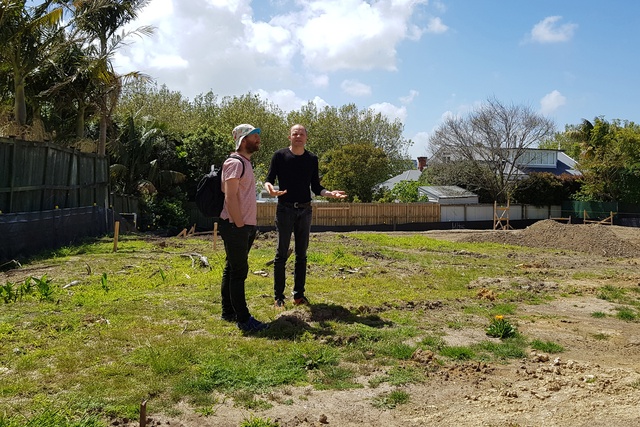
Members have identified that group selection and formation are critical to successful co-housing outcomes that facilitate a strong sense of community and ultimately, a strong sense of trust. As such, group selection and formation are identified as a critical aspect of the Cohaus journey - and thus any community-led process. Cohaus adopted a partial co-housing model which saw the lead families assuming more responsibility. This responsibility meant that the initial financial obligations of the project were borne largely by the lead families; who had, as one member referred to it, a “pot of money” or rather, significant capital. What this decision meant is that, unlike other community-led projects which typically adopt a full co-housing model, Cohaus created an explicit distinction between the lead families, the core group and then the wider group. A desire for such a distinction saw the cultivation of a ‘nucleus/lead families’, then a ‘core group’ of six to eight individuals or families who joined the project relatively early on and then finally a ‘wider group’ who were individuals or families who joined the project in its later stages. Lead family members identified that the wider group cycled through periods of transition as members joined, and also left, the project over the course of the project timeline. This wider group took around a year and a half to form - a journey one lead family member described as a “slow process of aggregating individuals onto the nucleus of the core group” stating that “we didn’t form up to a feasible size in one process.”
A point to note, in the context of co-housing/community-led developments globally, is that with such a self-forming group comes instability and dynamics that are ever-changing as people cycle in, and out of the project. What this means is that group formation is likely to be an ongoing process throughout the entirety of a co-housing project’s timeline. As such, it is critical to identify commonalities in prospective group members as this leads to a deeper commitment and desire to remain within the project long-term. Several members spoke to the idea of self-reinforcing relationships in co-housing, with members indicating their hope that Cohaus would allow for self-reinforcing close relationships with neighbours across generations. Envisioning an alternative social world, one that is communal, neighbourly, and symptomatic of the “old school village” allowed members to have that emotional buy-in into Cohaus as they were able to envision the benefits of the project before its deliverance, which in turn allowed them to actualize their hopes in reality.
In-house knowledge was a critically important component of the Cohaus journey, facilitating knowledge sharing, cost-saving, and member collaboration on high levels. Members identified this as being highly unusual in the case of community-led and acknowledged their “luck” in the group having a diverse and tangible skill set that was able to be tapped into at all stages of the project. Members thus largely owe the success of Cohaus to its people; their varied and diverse skill sets, and their willingness to muck in. This is an important part of the Cohaus journey that needs to be captured, and one that can provide learnings for those who seek to pursue co-housing themselves.
Factor 2: Design Process
Cohaus was conceptualized at a point of transition of social change in Aotearoa, as people gradually began to accept new development models. One lead family member identified that whilst the “vertical construction apartments sector is more ahead, and more mature” .. the “space between semi-detached and apartments” where Cohaus sits, is still relatively immature in Aotearoa. As such, the design process and its effectors came to the project with an awareness and an acknowledgement that everybody is feeling their way, and everyone is still learning. With this awareness came a recognition that costs will be uncertain, consenting will be a rocky road, and valuations will be less stable. Working to develop a client-architect type relationship between the two lead families helped to facilitate a more traditional design process creating a relationship wherein the ‘architect’ made decisions, and the ‘client’ decided if those decisions worked or not; removing the ‘architect’ from the tricky dynamic of being both client, and architect.
Members identified early on that with a full community-led model (‘co-design proper’), the design process would be a mess. Creating a dynamic wherein there were one or two ‘central people’ synthesizing the inputs, and eliminating possibilities by making decisions, and then presenting those decisions, helped to speed up the process and move the group forward at a workable rate. As such, Cohaus early on had to acknowledge that “the design of the building was not a classic ‘codesign’ process.” Rather, it was a ‘partial’ model with the two lead families giving direction, followed by wider consultation with the group. As a result of being a ‘partial’ model, the lead families members were quick to ensure they were always feeding back and “showing what they were doing” with the wider group; checking in on specifics and utilizing majority votes. However, for the most part, the design process (and as such the big decisions) were made by the lead families; guided by the design principles, and values of Cohaus. Individual expression within shared values was expressed highly among members as an expression of the values within the final design of Cohaus. One member noted that the values indicate a “collectiveness” of the group in that “we are working together to deliver physical design solutions … whilst enabling enough space for individuality to be expressed.” It was the balancing of the two - collective and individual - that was identified as an expression of the values within the final design. Another member noted that the process has been a delicate balancing of individual ideas, expression, and overall group values; which overall has been a unique approach to witness. Another said, “it [the design] is completely for everybody so I think that is also … a kind of embodiment of what we’re looking for in space.” The design process of Cohaus can thus be described as a ‘led’ co-design process.
Factor 3: Legal and Financial Structures
It remained incredibly important to members to find a development model that accurately represented the innovative nature of the development, and its innate nature as a co-development, whilst recognising that it was important to not over-step or push societal boundaries in setting up such a model. The group was driven to find an achievable model that would be easily reapplied in alternative contexts by new groups. One that could act as a formalised precedent leading forward. What was identified throughout the one-on-one interviews and wider workshops with the lead families, was that the development of the legal and the financial structures was an incredibly challenging part of the Cohaus journey. A process that saw the lead families shouldering a considerable amount of stress as they navigated uncharted territory with lawyers, banks, and the wider Cohaus group.
It was identified early on that small-time lawyers and accountants couldn’t deal with the project as it lay outside of their scope and was considered too complex. General advice from the lawyers themselves was that working with a bigger firm with a larger capacity to deal with such structures was advisable. Further, the search for a good legal team was compounded by the fact that the normal tax structure would be lethal for a project like Cohaus. Lead families indicate that it’s critically important to highlight that tax in the case of community-led developments, is the “hard thing.” There is a danger of the group being identified as developers and as such being seen to be selling to associated parties and trying to avoid tax. If such a situation were to occur, any sale at Cohaus would have to be market value. Throughout the project timeline, there was a wider concern that Cohaus would be below market value, leaving the group with a tax liability. Towards the latter stages of the project, it transpired that Cohaus is unexpectedly at (or even above) market value. One lead family member identified that this is often a common occurrence in community-led developments as they typically tend to seek to build better quality houses than a developer would, rather than just one that will achieve the greatest profit. As such the group opted to approach the tax and financial structures with a clear story and message, one that identified the group as a group of individuals building their own homes. Ultimately they are spending more on the building than a developer would as they’re after lifetime homes, which costs more than a standard developer’s approach. As the project progressed the lead families noted that they grew less concerned about tax through a combination of confidence in the position the lawyer and accountant had set up, and the realisation that valuations were far closer to project cost than previously thought. When developing your own co-housing legal structures this is a critical component of the process.

An interesting point raised by members was that broadly speaking lawyers do not understand the implicit trust that people have in each other to proceed in a co-housing project. This resulted in a situation wherein lawyers were advising clients to protect themselves completely, which meant risk couldn’t be shared among the group. The initial inability of lawyers to recognise this level of ‘implicit trust’ created issues, issues that could have been greatly avoided or alleviated had there been legal and financial structures in place that identified the circumstances, and values, underpinning community-led. Since there was no precedent for such a development the primary lawyer was essentially developing all agreements as they went along which meant they changed greatly as the project progressed. This is an important feature that Cohaus members wished to stress could (if alleviated or avoided) make community-led projects far less stressful and a great deal more accessible in Aotearoa. Given that risk-sharing seems too subtle a concept for lawyers to understand, it would seem that the best approach is to keep lawyers out of group negotiations for as long as possible. Just as one would in business negotiations. Thus by retaining an understanding of how co-housing (and the development models they adopt) fundamentally butt heads with the traditional realms of the legal, those looking to pursue a community-led development in the future will be at a far greater advantage than those who try to align with lawyers’ perceptions of risk.
The Urban Advisory has a particular interest in researching ethical property development; specifically, how alternative models adopted overseas could be applied in Aotearoa. Our research with Cohaus has enabled us to add primary research to the body of knowledge we are building in this space, supporting our objective of enabling resident-led and equitable property development to become a more widely used model. Currently, there is no framework or tools for local government, or central government, to support non-profit housing development. The lack of guidelines and of evidence-based approaches presents a significant challenge to those in Aotearoa looking to explore community-led housing approaches.
Alternative living approaches are possible, as evidenced globally, but are significantly challenging to actualize in our local communities. Recent signalling by MHUD in the final Government Policy Statement on Housing and Urban Development/Te Tauākī Kaupapa Here a te Kāwanatanga mō te Whakawhanake Whare, Tāone anō hoki has indicated that this tide may be turning and we couldn’t be more thrilled. We hope that through championing effective collaboration and information sharing mechanisms, the validity of such an approach can be strengthened; increasing community access to citizen-led, affordable, urban living that is truly resilient.

